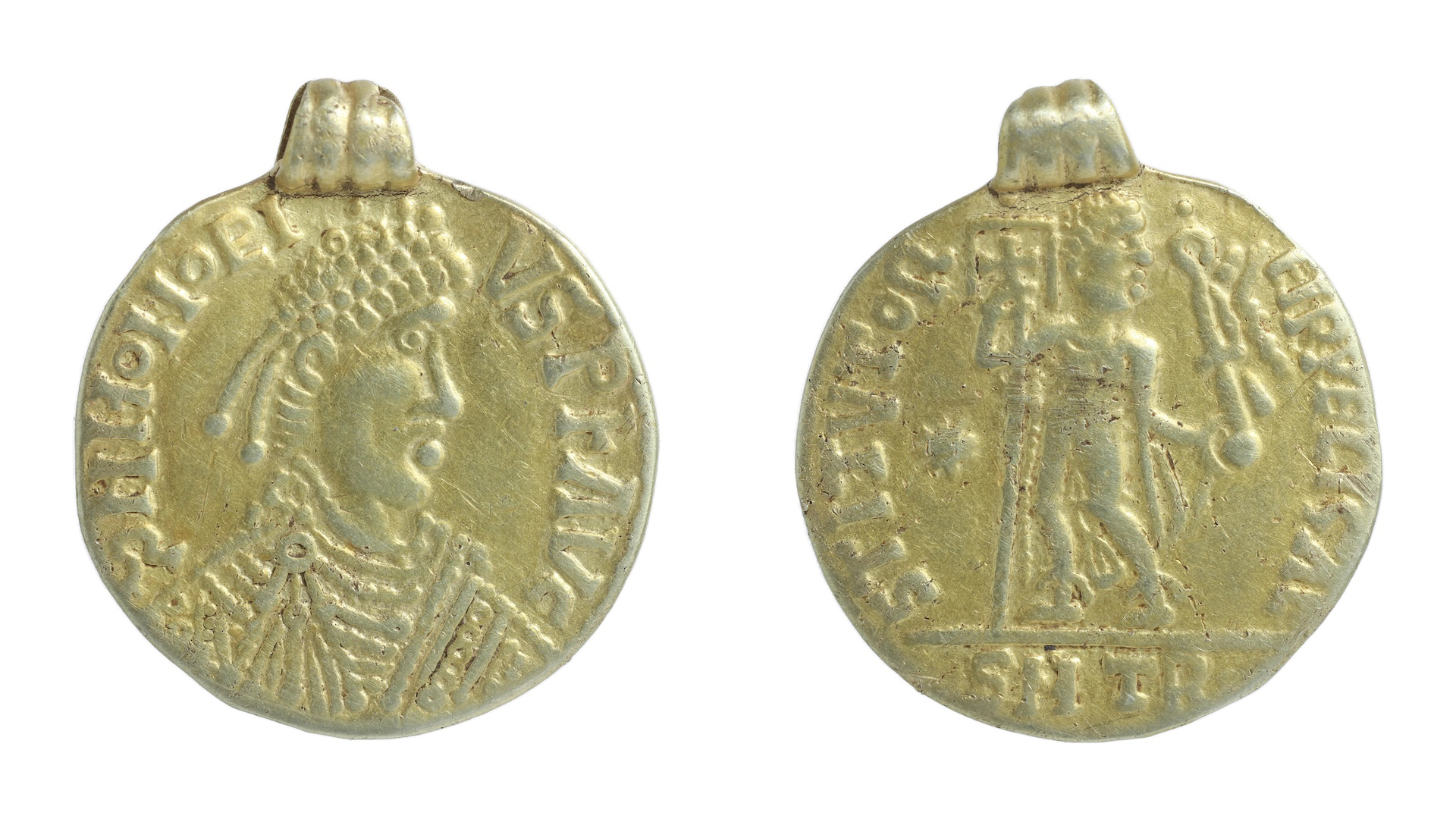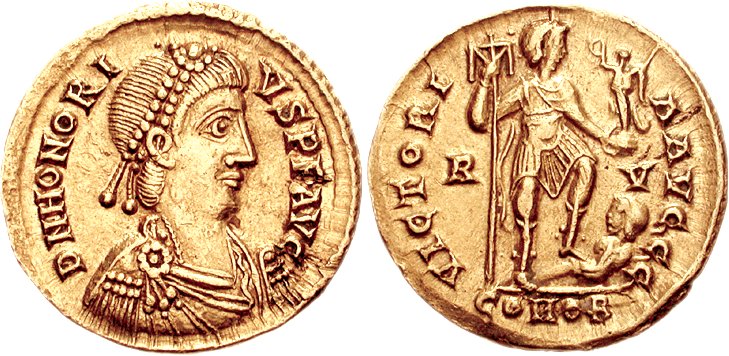Anglo-Saxons plagiarized a Roman coin — and it's full of typos
The pagan Anglo-Saxons copied a gold Roman coin with Christian imagery, but they didn't do a very good job.

An unusual piece of Anglo-Saxon jewelry — a plagiarized pendant rife with typos — that was discovered by a metal detectorist has now been declared treasure in the U.K.
The pendant imitates a Roman coin called a solidus, a type of gold coin introduced by the emperor Constantine in the fourth century A.D. It was discovered in January 2023 near the town of Attleborough in Norfolk, England, and dates to the late fifth to early sixth century. The piece of jewelry copies the imagery and inscriptions found on coins from the time of emperor Honorius, ruler of the Western Roman Empire from A.D. 393 to 423.
The obverse shows a bust of Honorius wearing a pearl diadem and a cuirass, or chest armor, while the reverse depicts a draped standing figure holding a military ceremonial flag, known as a standard, and symbols of war. On both the real and Anglo-Saxon imitation solidi, the standard clearly displays a cross, and the figure holds a miniature Nike, a traditional Roman symbol of victory.
For artifacts in the U.K. to be declared treasure, as this one was, they must be made of gold or silver and be at least 300 years old, said coin expert Adrian Marsden, a numismatist at Norfolk County Council's Identification and Recording Service.
The pendant is unique, Marsden told Live Science in an email. In the fifth and sixth centuries, Anglo-Saxons were pagan, but the Roman Empire had converted to Christianity in A.D. 380 under the emperor Theodosius I. His son, Honorius, ruled as a Christian emperor. Yet the pagan Anglo-Saxons copied a clearly Christian coin.
The Anglo-Saxons did not have a fully developed writing system at this point in time, which likely contributed to the "very odd" lettering on the obverse, Marsden said. The reverse, which should read "RESTITVTOR REIPVBLICAE," which means "Restorer of the Republic," is rendered incorrectly, as "STITVTOR EIPVBLICAE," omitting some letters and jumbling others.
Sign up for the Live Science daily newsletter now
Get the world’s most fascinating discoveries delivered straight to your inbox.

But these typos probably didn't bother the Anglo-Saxons, Marsden said. The pendant's designer likely did not intend it to be a faithful recreation of the original coin or to be used as currency. Rather, the artifact was fashioned as an item of adornment, with a gold loop soldered to the top. And while coins were commonly repurposed as jewelry, "to model a piece of jewellery on a coin is much more interesting," Marsden said.
The Romans ruled much of the British Isles from A.D. 43 to 410. When the empire left Britain, the Germanic Anglo-Saxons conquered much of what is now England. The Anglo-Saxons' imitation "demonstrates a desire to plug into this vanished age," Marsden said.
The pendant represents a time when a divided Roman Empire was actively crumbling around them, while simultaneously evoking a past full of myth and legend, Marsden said, adding that the Anglo-Saxons likely created this unique piece of jewelry as a way to emulate their predecessors.

Hannah Kate Simon is an archaeologist and art historian with a focus on Roman art and archaeology. Hannah holds a Master's degree in the history of art and archaeology from New York University's Institute of Fine Arts, as well as two bachelor degrees in Art History and Theatre from Indiana University of Pennsylvania. She previously worked at NYU's Grey Art Gallery as a contributor to its exhibition catalogues, interned at the Metropolitan Museum of Art in New York City, and excavated at Aphrodisias, an ancient Greek City in what is now Turkey.










